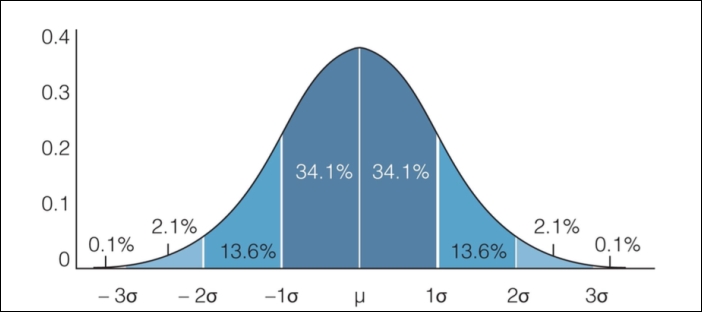Recall that a normal distribution is defined as having a specific probability distribution that resembles a bell curve. In statistics, we love it when our data behaves normally. For example, if we have data that resembles a normal distribution, like so:

The Empirical rule states that we can expect a certain amount of data to live between sets of standard deviations. Specifically, the Empirical rule states for data that is distributed normally:
about 68% of the data fall within 1 standard deviation
about 95% of the data fall within 2 standard deviations
about 99.7% of the data fall within 3 standard deviations
For example, let's see if our Facebook friends' data holds up to this. Let's use our Dataframe to find the percentage of people that fall within 1, 2, and 3 standard deviations of the mean, as shown:
# finding the percentage of people within one standard deviation of the mean within_1_std = df_scaled[(df_scaled['friends_scaled'] <= 1) & (df_scaled['friends_scaled...



